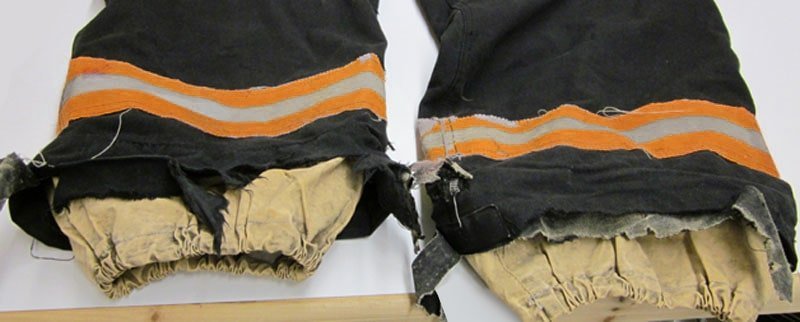Washing flame retardant fabrics clothing is important because it not only keeps the clothes squeaky clean but also increases their life so they can be effective against fire for longer. For linemen, welders, and other utility workers, it’s always necessary to wear the correct protective gear when working.
It means it’s necessary for them to wear the correct clothing, fall protection gear, and safety equipment. A lineman’s protective clothing must be durable and flame-retardant for optimum safety.
Utility workers like linemen and welders are constantly in danger because their work involves working around a fire, and a chance of a fire hazard is always most likely. Hence, flame-resistant clothing is a necessity for utility workers to provide them protection against flames.
No matter how durable and fire-resistant it is, flame-retardant clothing is still clothing, and clothes can get dirty. If you’re a utility worker and you’ve to wear your flame-retardant garment daily for work, it’s bound to get very dirty.
Washing flame-retardant clothing isn’t the same as washing everyday clothing. So before you wash them, you should know how to properly care for, dry, and wash flame-retardant clothing.
This guide will tell you about how to properly care for flame-retardant clothes, how to wash them, how to dry them, and how to remove stains. This guide will also give helpful tips regarding washing flame-retardant fabrics so you can avoid damaging your flame-retardant fabric or limiting its protectiveness against flames.
What Are Fabrics That Resist Fire?
Naturally Resistant Fibers
Some fibers have a natural ability to resist heat and flames without the need for extra treatments. This makes them safe and durable for making protective clothing.
These fibers are built to withstand fire, making them highly reliable for various safety applications.
Fabrics with Added Protection
Certain fabrics aren’t naturally resistant to fire, so special chemicals are added to them for protection. Materials like cotton, for example, need these treatments to slow down burning.
The added chemicals help prevent flames from spreading, making these fabrics safer to use in fire-prone environments.
Fibers with Built-In Protection
Some synthetic fibers receive flame-resistant treatments during their creation. These chemicals become a part of the fiber itself, ensuring they remain fire-resistant for the garment’s entire lifespan.
Washing these fibers does not remove their protective qualities, allowing for long-term use.
Mixed Fabrics
Mixed fabrics are created by combining naturally flame-resistant fibers with those that are treated. This blend provides a balance of durability and protection.
It leverages the strengths of both types of fibers to offer effective protection against fire. Combining these materials creates garments that meet safety standards while offering comfort and functionality.
Can You Wash Flame Retardant Clothing?
Washing fire-resistant clothing is important to keep it working well. Dirt, oil, and grease can harm its protective abilities.
Wearing garments covered in paint, oils, or other harmful substances can reduce safety. Cleaning these clothes quickly helps maintain their flame-repelling ability.
It’s simple to clean these special clothes with the right tools and methods. Proper washing keeps them effective longer, ensuring that they protect the wearer as intended.
Avoid using any cleaning products that might damage the fabric’s protective qualities. Regular care extends the garment’s lifespan and safety features.
How to wash your flame retardant clothes?
Step 1
Ensure you wash your flame-retardant clothes separately from your other clothes. There is a risk of a decrease in protection in your flame-retardant clothes if you put them in a washer with normal clothes. Separately washing your FR clothing will ensure no contaminants get into your flame-retardant clothes.
Step 2
Remember to turn your clothes inside out. This helps preserve their flame-resistant capabilities.
Step 3
Avoid using the hottest temperature setting when washing your flame-retardant clothing. Your clothes will shrink if the temperature is too high. Use cool or warm temperatures. Most flame-retardant clothes are washed at 140 degrees.
The material of your clothing also depends on what temperature your garment may start shrinking. Check the label of your clothes for further details regarding the maximum temperature. Avoid letting the garments stay in the washer for far too long, as it can damage the protective finish of the FR clothing.
Step 4
Do not use vinegar, bleach, or other additives when washing your flame-retardant clothes. Your garment’s integrity can be damaged through bleach. Before using a detergent, check its label to see if it has liquid non-chlorine or chlorine bleach; if it does, then avoid using it.
Also, avoid starch, fabric softeners, and any other similar additives as well. These can decrease your flame-retardant garment’s protective capabilities as well.
Flame Retardant Fabrics Washing

Flame-retardant clothes can be washed in a regular home washing machine or industrial washing machine. Flame-retardant clothing can also be dry-cleaned. Before learning about the tips for washing flame-retardant clothing, it is best to know what things you should avoid when washing FR clothing.
3 Things To Avoid When Washing FR Fabrics Clothing
- Avoid using bleach or any detergent containing bleach. Bleach can reduce the flame resistance of FR clothing
- Avoid fabric softeners or any detergent that may contain fabric softeners. Fabric softeners are flammable and can also reduce flame resistance
- Avoid starch or detergents containing animal fats. Starch can act as a fuel, and animal fats are flammable
9 Tips For Washing Flame Retardant Clothing At Home
- FR clothing can be washed at a permanent press or normal cycle, depending on what type of garment you have. You can wash canvas garments and insulated outerwear on normal cycles and FR shirts in the permanent press cycle using cold water
- Washing FR clothing separately from your everyday clothing will help avoid FR clothes from being contaminated and your everyday clothes from getting dirty.
- Most flame-retardant clothes can be dried and washed at any temperature. Check the labels on your clothes beforehand for temperature recommendations
- Turn your flame-retardant garments inside and out. This will prevent streaking during abrasion
- Make sure you don’t use fabric softeners, bleach, and starch
- Use soft water to remove contaminants that may be on the clothes
- Ensure soil and any other contaminants are removed from the FR clothing. If contaminants and stains aren’t removed from washing, you can dry clean or use stain remover products
- Use low heat when drying your flame-retardant clothing and a low setting when ironing them
- You can also consult the manufacturer if you’re still confused about anything regarding your flame-retardant clothing
6 Tips For Washing FR Fabrics Clothing At An Industrial Laundry
Washing flame-retardant clothing with an industrial machine will be slightly different than washing it at home.
- Separately wash your flame-retardant garment, or else you will damage its luminescent effect
- Avoid natural soaps and utilize only non-iconic detergents
- Same as washing at home, when washing at an industrial machine, ensure you only use soft water and avoid hard water. Hard water can precipitate soaps and can cause a buildup of magnesium salts which will affect the flame resistance and luminescent properties of the FR clothing
- Follow the temperature instructions and detergent recommendations given by the manufacturer when washing your flame-retardant garment
- Use a short extract time so you can prevent wrinkles on the flame-retardant garment
- Ensure you don’t over-dry your garments to avoid shrinkage. Remember to keep the total temperature below 280 degrees
The Importance of Removing Stains
Stains can be particularly hazardous on flame-resistant clothing. This is because oils, grease, and gasoline stains can catch fire, reducing the effectiveness of the garment.
It is crucial to eliminate these to maintain safety. Fire-resistant properties should remain intact to protect individuals working near flames.
When home washing machines fail to remove these stubborn marks, it is advisable to utilize industrial washing equipment or consider professional dry cleaning services. This ensures that the protective gear retains its ability to resist combustion.
How to Handle Oil Stains on Flame-Resistant Clothing
If oil gets on flame-resistant clothing, it is important to clean them right away. Oils and grease can catch fire easily, which could be dangerous.
Start by using hot water and a regular detergent that does not have bleach. Gently scrub the stain until it is gone.
Do not use bleach or plain soap, as these may damage the fabric or reduce its flame-resistant qualities.
For stubborn stains that won’t go away, consider taking the clothes to the dry cleaner.
When stains cannot be removed, it is best to replace the garment, as stained flame-resistant clothing may not protect properly against fires.
